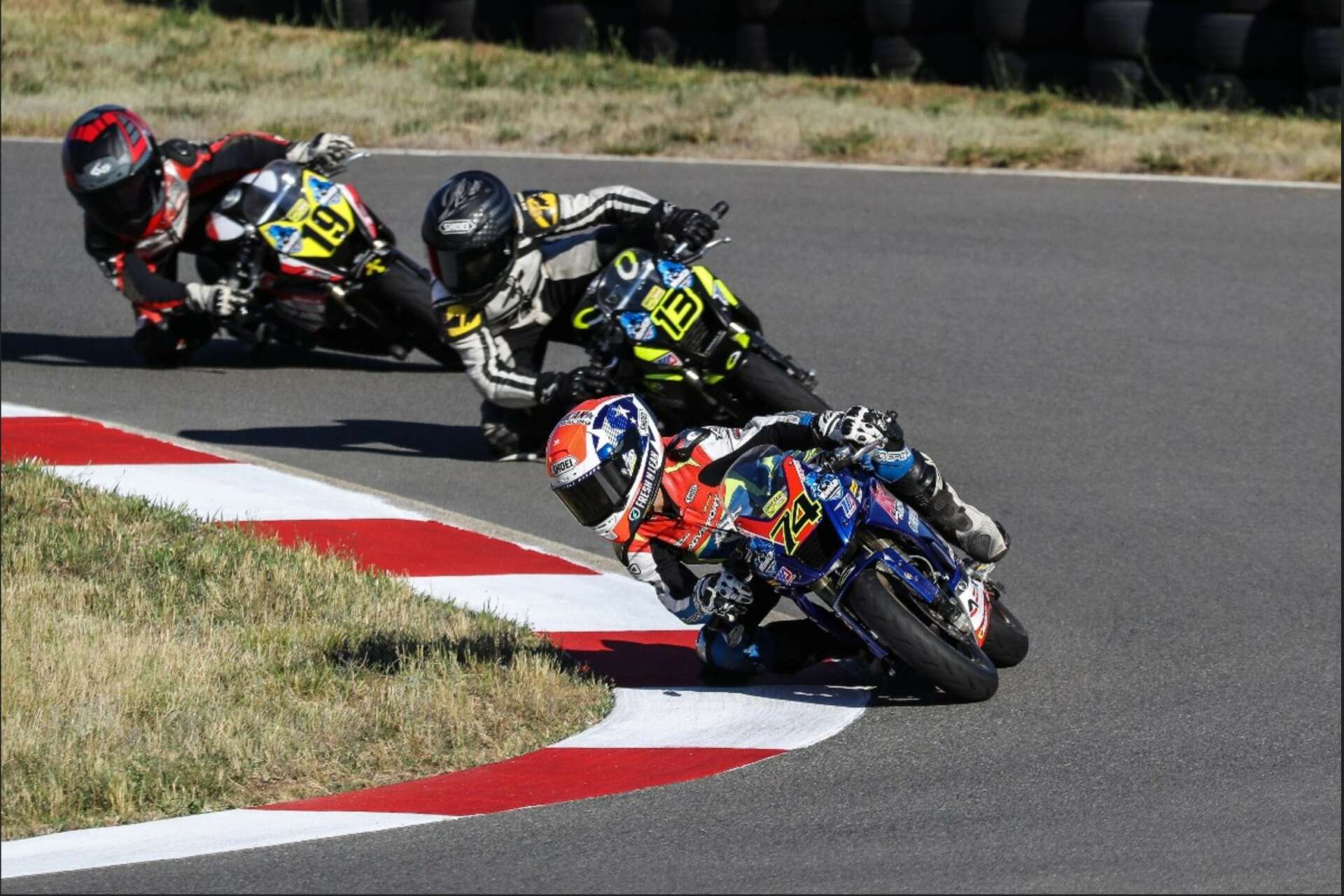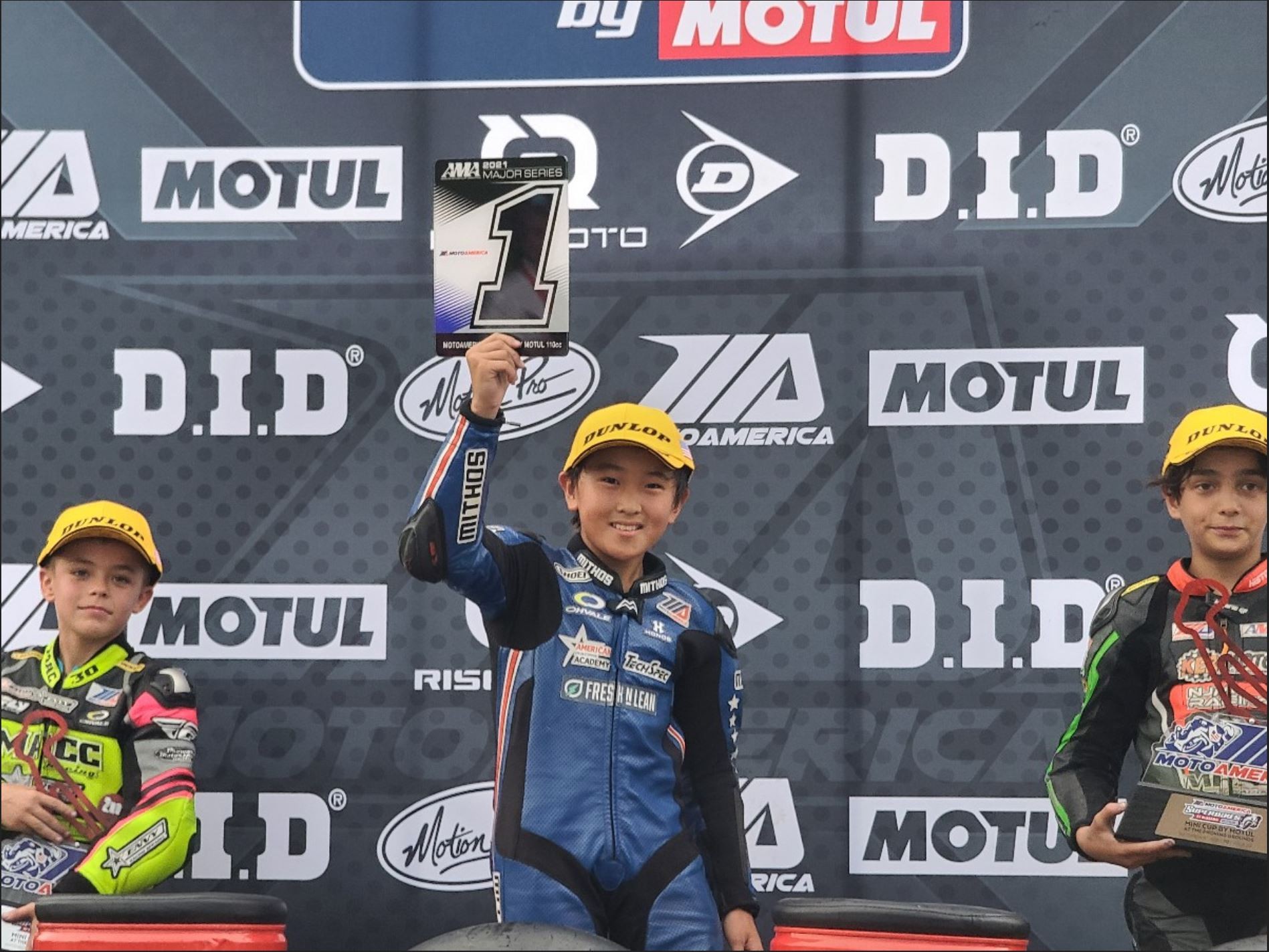We’re excited to introduce you to the always interesting and insightful Kevin Borough. We hope you’ll enjoy our conversation with Kevin below.
Kevin, appreciate you joining us today. What’s the backstory behind how you came up with the idea for your business?
The idea for The Starting Grid Foundation initially started from a genuine passion for motorcycle racing. My wife and I have both rode motorcycles for years and both grew up loving racing. Growing up watching NASCAR with my Dad, racing was always something for the extremely wealthy with names like Joe Gibbs Racing or Hendricks Motorsports who own multiple race teams worth hundreds of millions of dollars.
The turning point was a chance encounter at the MotoGP race in Austin, TX where we met a young rider and his father. After chatting for a long while about our respective love of the sport, I asked him what he did for a living, no doubt thinking that he must be the owner of a fortune 500 company in order to support his son in his dreams of racing on the world stage. Through that conversation, we came to find out that both he and his wife were working blue collar jobs and taking out loans to support their son’s race season that could cost upward of $100,000/year. Sponsorship typically helped cover roughly 25% of that, and without more, they were worried their son wouldn’t be able to continue racing. Mind you, this was a 14 year old kid who had already won multiple championships and the family was still struggling to find sponsorship.
My next question was who was working to help them beyond sponsorship? When the answer was no one, the idea to create The Starting Grid Foundation was born. As the foundation began to form and we continued to talk to more industry experts or racers themselves, we realized the initial encounter we had was not an exception but very much the norm, and families were sacrificing unbelievable amounts of money just to give their son or daughter a shot at greatness.
Being true fans of motorcycle racing, we realize it has been nearly 17 years since American’s have won a title on the world stage and the last American to race in the top class was in 2015. Why is that the case? It was a question we struggled with for so long, but as we began to form The Starting Grid Foundation, we realized other countries were supporting their young riders so much better than we are. There are schools, government grants, and even entire race series dedicated to propelling European riders to MotoGP, and all of those programs interface with each other. Here in the U.S. there have been attempts to do the same, but most are half hearted and do not have an end goal of pushing American’s to the international level.
We realized we were the only ones doing what we are doing, and we took it upon ourselves to be the change we wanted to see in the sport.


Great, appreciate you sharing that with us. Before we ask you to share more of your insights, can you take a moment to introduce yourself and how you got to where you are today to our readers
Oddly enough, neither one of us began this journey in the automotive industry at all. I was and still am an active duty Navy helicopter pilot and my wife was in clinical research when we started. We were fans of the sport and didn’t really see ourselves as ever being more than that.
But we are passionate about what we do, and want to see the U.S. succeed! Racing is a part of American culture, all the way back to the first cars and motorcycles. To see that we haven’t had a presence in almost a decade is crushing, and unless we do something now, we will continue to be outpaced by our European counterparts.
The way we have managed to help the most is by partnering with large corporations to give them an avenue into helping the sport. Sponsorship is fantastic, but what most companies or large corporations don’t realize is that sponsorship is not the end all be all to how they can be a part of the sport. We provide avenues for them to provide sponsorship where it matters most and where they can see real tangible results from the young riders that they help support. In a $100,000 per year race season, literally every penny helps, even if it is a set of new tires, a tank of gas, or a night at a hotel.
The other way is by interfacing with the fans themselves. Racing fans are some of the most generous and kind hearted people we have ever met. They share the same frustrations as we do with the lack of American presence and want to help, but they don’t have an avenue to do it. Throughout the year we hold fundraising events to give fans a way to do just that, and every penny goes back into helping our country’s young riders!
What do you think helped you build your reputation within your market?
Honesty. While we are still small and growing, you will inevitably have moments where you hit a moral fork in the road. On one path, you can inflate yourself and make your organization seem like its more than its not, or you can be honest and real.
We have always aligned ourselves with honesty and instead let our genuine passion do most of the talking. The relationships we have formed because of this are meaningful and much more long lasting. Its also interesting, because when you come across as genuine, you will no doubt end up meeting a few disingenuous people, and it is really apparent who is being honest with and who is not when your conversation starts from a place of honesty.
Its obviously hard to say without being someone from the outside looking in, but I would say that we have garnered a reputation for being genuinely passionate about the issues we are working to solve, and we are not here to earn a quick buck.


Learning and unlearning are both critical parts of growth – can you share a story of a time when you had to unlearn a lesson?
One word. Sales. The nonprofit world is all sales, whether that is a reality that those in our business want to accept or not. We are constantly selling ourselves as a product, and it is something that I struggled with very early on.
I come from a background of leadership that is very much “problem-solution” based. I see a problem and I try to fix it. Early on I brought this approach to our nonprofit and I was truly spinning my wheels (pun intended of course) and I couldn’t figure out why I wasn’t getting our message across to potential clients.
As it turns out my language was all wrong, and sales is all about listening. Asking the right question, and listening some more. I am not a podcast guy, and believe it or not I realized this one day listening to a podcast about nonprofit sales, and they kept talking about the “Sandler Method”. Long story short, I got smart on it, and it completely changed my approach to potential clients and I been much more successful.
Contact Info:
- Website: www.thestartinggrid.org
- Instagram: https://www.instagram.com/the.starting.grid/
- Facebook: https://www.facebook.com/Thegridfoundation
- Linkedin: https://www.linkedin.com/company/the-starting-grid-foundation
- Twitter: https://mobile.twitter.com/gridfoundation
Image Credits
Kensei Matsudaira (age 11) and Travis Horn (age 15)


